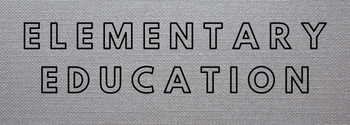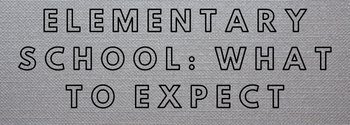Hobby As The Best Way To Choose Future Career
My teacher reminded me of the old adage that “If you love what you do, you won’t need to work a single day in your entire life.” (Garson). These wise words resonated with us for many years. Recently, however, I began to wonder if there is something I love. But, what if I can turn my passion into a career?
Fashion has been a passion for me my entire life. Since I was little, I have always taken pride and admired good fashion designers. I was able to channel that pride and idolization over the years and put it into practice. My imagination and creativity allowed me to design and bring my passion for fashion to life. This hobby was fun, but it wasn’t a full-time job. Although I find fashion fascinating, I don’t make much progress in my other interests or skills. However, now I’m pondering what my eighth grade teacher said about fashion. Is this a diversion or if it could be a big part of my life. I asked myself where I want to be on December 13, in relation my goals. I answered that I would like fashion to become a more serious hobby, explore all its avenues and consider pursuing a career in it. I intend to join the Fashion Society of Penn State. I’ve already spoken with the board about some designs and attended the first meeting. It was exciting to hear the goals and plans for the club’s semester from the board members. This was the first time I have taken action on my love for fashion. It is a very exciting thought to be able to take it further than self-entertainment. A second step is to utilize some of my resources from home. I am only 40 minutes away from New York City (Fashion), and I have relatives who have worked in fashion for many years. I also want to make new pieces that are not in my comfort zone. I have been content with my current routine for a while, so it is possible to break away from what I am used too.
Graphic merchandise is my current comfort zone. I revamp clothing that has been previously purchased. I might alter a plain tee to incorporate my design. But I also have many non-graphic designs that I want to make from fabric. This level in design is new for me. It’s something that I have avoided for some years. This semester is over, but I want to continue exploring this style of design and creating more sketches.
I am not able to create a non-graphic sketch because I have never done it. Julie Bonnar, author of “The Pattern Pages,” says that it is better to do a good job on a simple garment than to feed a dog a meal of something too complicated. (Bonnar). A printed pattern for beginners is recommended. These brands are designed for beginners: Simplicity, Butterick and Burda. It is important that beginners choose sewing patterns that are easy to understand. The description of a suitable pattern for beginners should include the words “easy,” simple, and “for beginner” in it. There are also reviews of patterns on different websites. It is a good idea to research a pattern before you buy it. An easy pattern shouldn’t have too many pieces. You will have a better sewing experience if there are fewer pieces to cut. Retail shops are great places to purchase your first pattern. The staff can offer valuable advice. It is important to ensure that you get the right size sewing pattern. This is possible only if your body measurements are accurate (Bonnar).
After choosing your pattern, choose your fabric. Bonnar says that choosing the right fabric can make a garment or not (Bonnar). The recommended fabric type for beginners should be used. It might seem tempting to make your own sewing pattern but this will produce a better result. It is best to choose fabrics that you can easily sew. Fabrics that don’t fray and aren’t too slippery are easier to work with (Bonnar).
After you have chosen your fabric and pattern, cut your pieces and then sew them together. You should first reread your sewing pattern. This will allow you to see the steps step-by-step. This will help you avoid making mistakes and unpicking any seams that have been incorrectly sewn. Pin things horizontally so that the seams are parallel. Pins can be removed easily and will help you see how your pieces will fit together. It is helpful to have resources that help you understand techniques and the construction of garments such as books and tutorials online.
While I am keen to develop my designing skills by semester’s end, I also wish to explore other avenues in fashion. I would like more information about the different careers in fashion and to find out if these are appealing to me. It is not easy to get into design because of its “hit-or miss” nature. Although I do not intend to stop designing, it is something that I must accept. It may be beneficial to consider other careers in the industry I like. I’d like to learn more about conservative fashion jobs, while still pursuing my design dreams. Alison Doyle, a career specialist and job search expert, recognizes the many tasks fashion workers perform. She says that fashion designers might be able to analyze trends in clothing and shoes. They may also decide on design concepts. They may use computer-aided designing programs to create designs.” (Doyle). The list of possible fashion job titles she has listed is extensive. I’ll be paying close attention to it over the coming months.
Fashion has always been a passion of mine and an outlet for my creativity, so I think it would be a great career choice. There are however many downsides. Fashion is an extremely competitive field. A hobby can sometimes be turned into a job, which I find very distasteful. This is because you no longer have the freedom to choose your hobbies, but are instead forced to adhere to a schedule. These are the reasons I want to feel confident about my career choice. In the coming months, that is my goal.
I remember the 8th grade teacher’s repetition of an old saying as a constant reminder to me. Now, I am contemplating whether I want to make fashion my career. The semester will see me improve my designing skills and learn more about the careers available in the fashion industry. I also want to consider its pitfalls. This goal is broad but there are specific steps that I need to follow to accomplish it. They range from ongoing research to creative action. My career and my future are my priorities. I’m willing to put my efforts into such matters. As I mentioned earlier, my goal in life is to love my job and never work.



